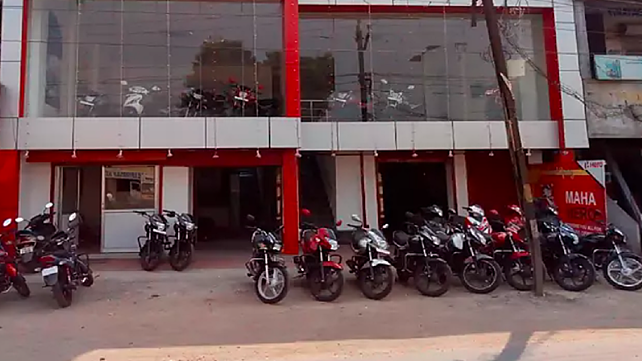
Two-wheeler sales in March 2023, going by FADA (Federation of Automobile Dealers Associations) data, show numbers growing even while doubts remain about a dramatic turnaround in the near future.
All in all, 1,445,867 two-wheelers were sold representing a 12.42% increase from 1,286,109 units retailed in March 2022. For fiscal 2023, sales were up 18.54% YoY though still 9% below pre-COVID levels. The 2W segment fell to a 7-year low with total retails of 15.9 million units during the year. EV penetration in this category was 4.5%.
Manish Raj Singhania, President, FADA told Mobility Outlook, 'A lot of the entry two-wheeler buyers are in a mixed mind state at the moment. They are not able to ascertain whether they should invest in an ICE two-wheeler or an electric one. This has led to them postponing buying decisions.'
This state of affairs is not likely to change till a trusted brand launches an entry-level electric two-wheeler. Singhania said, 'This would also help take away EV-related fears from customers' minds. Most electric scooters are priced upwards of INR 125,000 while their entry-level segment counterparts in the ICE segment are available below INR 80,000.'
For the two-wheeler industry to flourish, India needs an economically priced entry-level electric,' Singhania added. Rural India, meanwhile, continues to reel under inflationary pressures.
3-Wheelers Roaring
The 3-wheeler category grew 84% YoY to 767,071 units sold during FY23 from 417,108 retailed in FY22.
“Electrification in this category reached 52%, primarily driven by the e-rickshaw segment. The availability of finance, alternative fuels and state subsidies have contributed to the growth of this segment,” Singhania said.
March alone reported sales of 86,857 three-wheelers, 68.71% more than 51,483 units sold in the same month last year. According to FADA, the 3W segment achieved record-high retail sales by growing 69% and surpassing the previous high f March 2020, the period when the transition from BS-4 to BS-6 occurred.
Singhania is confident the 3W industry would continue to create new records powered by the electrification wave. Moreover, most electric 3Ws do not require as many permits to operate compared to their ICE counterparts.
| CATEGORY | FY23 | FY22 | YoY % (2022) |
| 2W | 1,59,95,968 | 1,34,94,214 | 18.54% |
| 3W | 7,67,071 | 4,17,108 | 83.90% |
| PV | 36,20,039 | 29,42,273 | 23.04% |
| TRAC | 8,27,403 | 7,66,545 | 7.94% |
| CV | 9,39,741 | 7,07,186 | 32.88% |
| LCV | 5,54,585 | 4,38,802 | 26.39% |
| MCV | 60,818 | 48,005 | 26.69% |
| HCV | 2,93,796 | 1,97,365 | 48.86% |
| Others | 30,542 | 23,014 | 32.71% |
| Total | 2,21,50,222 | 1,83,27,326 | 20.86% |
Record PV sales
Passenger vehicle retails reached a record 3.6 million units, growing 23% YoY. The previous high was in FY19 when sales totalled 3.2 million units.
The segment saw a slew of new launches and better product availability thanks to the easing of the semiconductor shortage during the year. The demand for higher-end variants also helped sustain sales.
However, the entry-level category remains under pressure with its customer base hit by high inflation. Against 2,942,273 units sold in FY23, the corresponding figure in the preceding fiscal was 3,620,039 units.
March this year saw PVs grow 14% YoY and FADA believes better supplies and sales at the upper end of the spectrum kept the meter ticking.
“This, apart from an increase in prices of OBD 2A vehicles, coupled with multiple festivals kept sales healthy though enquiry levels have now started decreasing,” Singhania said.
Commercial vehicles and tractors
In March, the commercial vehicle (CV) category showed robust growth at 10% YoY with 92,790 units sold, up from 84,124 units retailed in 2022.
“Apart from infra spending by the Centre, OBD Stage 2A price hike coupled with discount offers from OEMs saw pre-buying,” explained the FADA chief. In FY23, 939,741 CVs were sold as against 707,186 units sold in the preceding year, a 32.88% YoY growth
Tractors registered single-digit growth of 8% and, yet, clocked an all-time time high retail of 8.27 lakh units, surpassing the previous high of 7.82 lakh units in FY21.
Consolidation Year
“FY23 was the first full year without any impact of COVID after a gap of two years. Consequently, overall retail sales during the year experienced double-digit growth of 21%.
Similarly, all categories except for tractors saw double-digit growth, with 2-wheelers, 3-wheelers, passenger vehicles, and commercial vehicles growing by 19%, 84%, 23%, and 33%, respectively. Tractors, however, only grew by 8%,' said Singhania.
FY24 is expected to see tapered growth in the low single digits due to a high base, inflationary pressures, routine price hikes, and regulatory changes. Additionally, for the third consecutive month, US Government agencies have warned of the possibility of El Niño's arrival later this year, which could lead to poor monsoons, hampering rural India's growth potential. The untimely rains and hailstorms in North and Central India have destroyed key rabi crops and delayed harvesting, which will have a negative impact on rural sales. The year will also witness high EV penetration which will eat into ICE market share.
“Overall, FY24 will be a year of consolidation for the India Auto Retail Industry with an overall single-digit growth over the previous year,” Singhania concluded.
Also Read